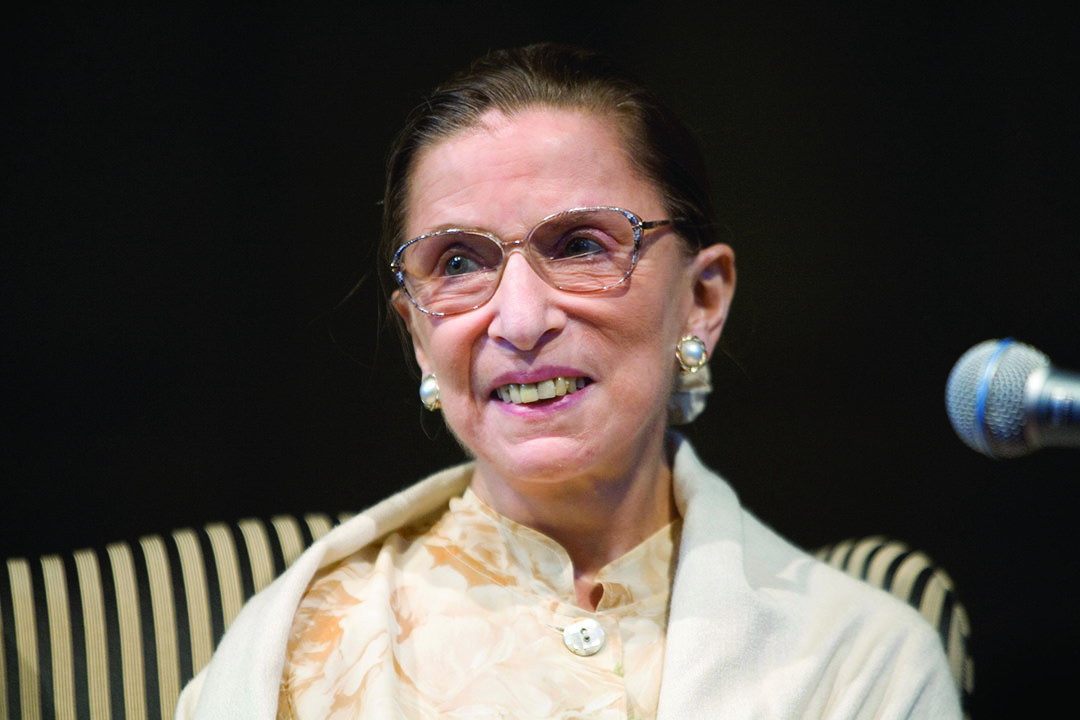Roughly a year ago, the world lost iconic Supreme Court Justice Ruth Bader Ginsburg. A late-life cultural icon revered by lawmakers on both sides of the aisle, Ginsburg was to women’s rights what Thurgood Marshall was to civil rights: a titan unmatched. At a time when there are so many worthy causes to take up and so many injustices around us, there is much we can learn from Ginsburg about facilitating change.
After completing her undergraduate degree at Cornell University, Ginsburg went on to study at Columbia Law School, where she graduated at the top of her class. At Columbia, Ginsburg was tasked not only with completing her legal studies, but also with taking care of a young child and ailing husband. Years later, she would recount that after a full day of taking classes, gathering notes from her husband’s peers, and typing her husband’s senior paper, per dictation, she would comfortably settle down to her own studies at around 2:00 am.
With such a work ethic, it should come as no surprise that Ginsburg would go on to become Columbia Law School’s first tenured woman professor in 1972. From there, she would go on to lead the American Civil Liberties Union’s newly launched Women’s Rights Project. She argued six landmark cases in front of an all-men Supreme Court, and won a staggering five.
By now a linchpin for the broader women’s rights movement, Ginsburg was nominated to the US Court of Appeals for the Washington, DC Circuit in 1980. She found her way to the country’s highest court 13 years later following then-President Bill Clinton’s nomination. On August 3, 1993, Ginsburg was confirmed in the Senate by a 96–3 vote, an achievement that seems otherworldly in today’s tense political climate.
Despite her rightful reputation as one of history’s most revered feminists, Ginsburg was not always a trailblazer ideologically. In fact, it took a work trip to the ever-egalitarian Sweden for Ginsburg to fully realize the extent of gender discrimination stateside. “The experience proved formative,” wrote Pulitzer Prize-winning journalist Linda Greenhouse. “Feminism was flourishing in Sweden, and there was nothing unusual about women combining work and family obligations.”
What’s fascinating is how Ginsburg approached the legal fight for gender equality. Taking a sweeping look at gender discrimination, Ginsburg fought for both men and women sidelined by the legal system.
Did Ginsburg believe that sex-based discrimination toward men was by any means as pernicious and prevalent in society as discrimination against women? Obviously not. But Ginsburg tacitly understood that she had to cast a broader net to make any progress at all. She understood that to truly facilitate meaningful change, she had to appeal to the majority.
In fact, in one of her most prolific cases, Ginsburg took on a widowed male plaintiff unable to receive childcare benefits because of his sex. This was the perfect plaintiff for Ginsburg, “Not only because his claim to the benefits that would go automatically to a widow might strike sympathetic justices as reasonable, but because his very goal could open the court’s eyes to the fact that child care was not a sex-determined role to be performed only by women,” explained Greenhouse.
The unfortunate reality is that when it comes to some of the most pernicious societal inequities in the world today, change is very hard to come by. People, it turns out, are not always ready to listen to reason, nor open to civil discourse. This is a reality that Ginsburg understood. As a result, just like Thurgood Marshall before her, Ginsburg was patient and judicious in her legal crusade. Prudently, she advanced step by step, brick by brick, case by case, all the while building on the precedent just recently set and appealing to her audience. Should she have had to cater to an all-male court? Absolutely not. But she recognized that she had to, and took that into account.
At a time when the number of issues around us can seem dreadfully overwhelming, we must look back to the change-makers of history. One year following her death, Ginsburg and her sagacious approach to progress — at a time when the cards were most certainly stacked against her — is the perfect case study. If there are two things students, especially student activists, should take away from her life, it would be her persistence and thoughtfulness. As we try to conquer our own pressing issues — climate change, Indigenous rights, racial discrimination, gender inequality, and more — we cannot give up because of the obstacles in our path, and we must also be deliberate in our actions.
William Lloyd is a second-year history and peace, conflict, and justice studies student at Trinity College. He is the co-president of the U of T Model UN Travel Team, an executive team member of the Hart House Debates and Dialogues Committee, and the co-founder and president of the Open Debate Initiative. He was a lead analyst of the G7 Research Group during the 2020–2021 academic year.


